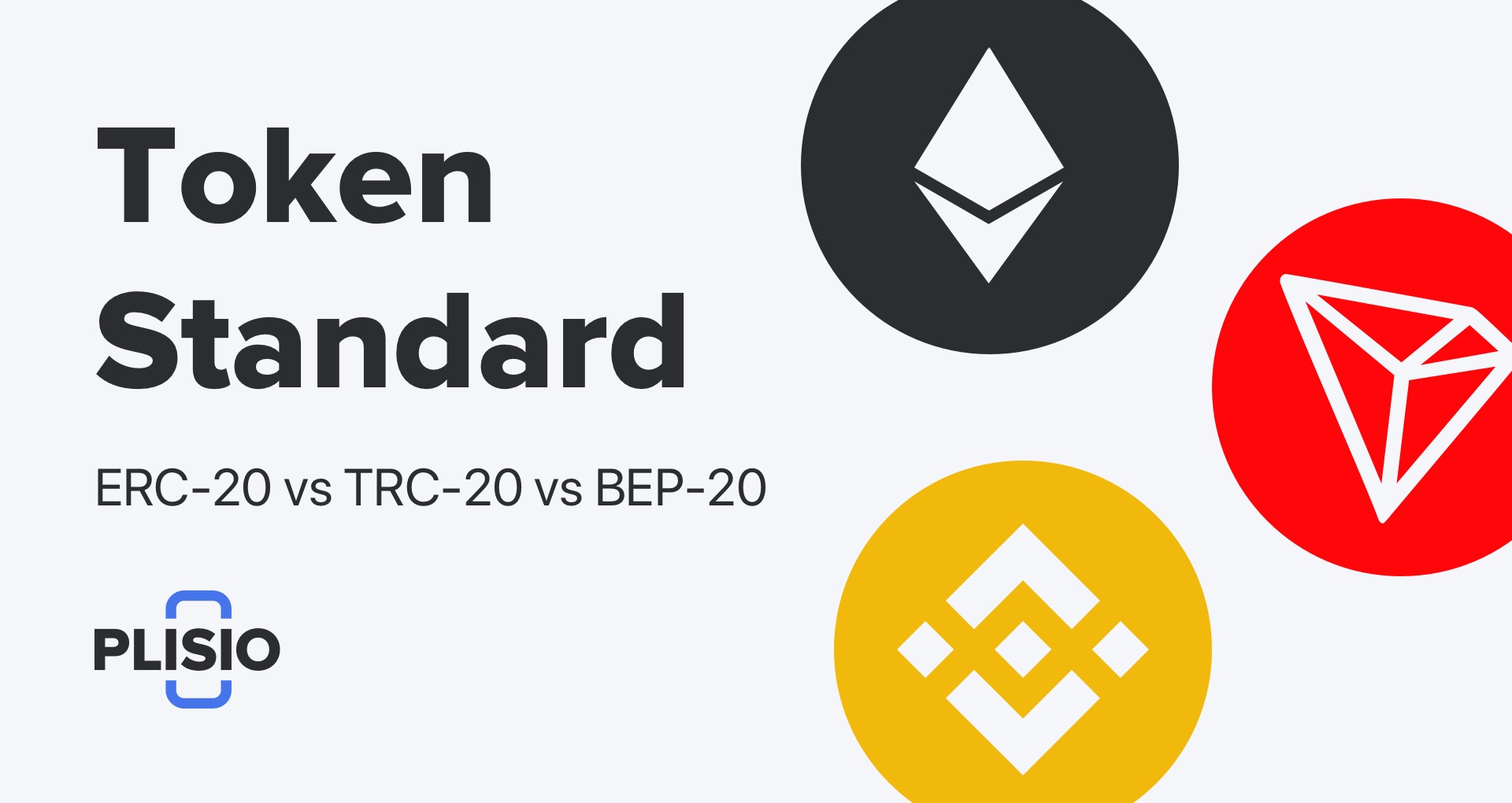ERC-20 vs. TRC-20 vs. BEP-20 Token standard

Blockchain is a virtual ledger of transactions distributed over the network of computers on the same blockchain. As of today, there are three of the most popular blockchains – Ethereum (ERC-20), Binance (BEP-20) and TRON (TRC-20), and each of these blockchains have their own token standards.
A token is a native blockchain cryptocurrency that is created by different startups to fulfill a project on the blockchain network. Each token can be used for various purposes, and in this article, we will compare the given token standards to find out how to choose the ideal token standard for your own needs.
What do we understand by a Token Standard?
Every existing blockchain has their own token standard, compatible with the network. Simply put, a token standard is a set of rules that regulates all the tokens under the given standard (ERC-20, BEP-20 or TRC-20). A token standard identifies the way the tokens are built, issued and deployed on the network. For example, TRC-20 or TRC-10 are the TRON blockchain standard, which simplifies the process of creating new tokens on the TRON network. The most advanced token standards are:
- ERC-20 (Ethereum blockchain)
- BEP-20 (Binance Smart Chain)
- TRC-20 (TRON blockchain)
Let’s take a closer look at each of these three token standards and discover their main differences.
ERC-20 Token Standard
The ERC-20 token standard is fairly the most popular token standard widely used for DeFi projects. ERC-20 tokens are Smart contract based and developed to run on the Ethereum network. Most of the ERC-20 tokens are listed on top of the CoinMarketcap chart. “ERC '' in ERC-20 stands for “Ethereum Request for Comment”.
To create an ERC-20 token is no hard task for developers, but it still requires basic programming language knowledge and corresponding expertise.
Main ERC-20 features:
- ERC-20 transaction have swift transaction confirmation
- The Ethereum blockchain has advanced security and therefore a low hacking risks
- ERC-20 tokens are globally accepted, come with special wallets and are easy to use. Some of the ERC-20 tokens are even compatible with TRON and Binance Smart Chain networks
The ERC-20 token standard is indeed accepted all over the globe. If you don’t know how to get started with ERC-20, you can visit the Plisio cryptocurrency payment gateway website. You will find a lot of useful guides there, as well as get a free wallet and Plisio payment gateway option for your website. No extensive code knowledge required.
TRC-20 Token Standard
TRC-20 token standard is used to build and deploy tokens on the TRON blockchain. Initially, TRON was created as a more efficient and advanced competitor to the Ethereum network, focusing on cheaper and quicker transactions. The TRON Virtual Machine makes all the TRON tokens compatible with the Ethereum blockchain as the same Solidity language used for TRC-20 token development. All TRC-20 tokens come with a digital wallet and can be swapped, transferred and shared.
All new tokens are produced and deployed on the TRON network website, code knowledge and technical competence required.
Main TRC-20 features:
- Interoperability with the Ethereum network
- A fasted and cheaper Delegated Proof-of-Stake consensus mechanism
- Accommodation with special digital wallets to transfer and share tokens
BEP-20 Token standard
The BEP-20 standard is another popular standard for token creation. The Binance Smart Chain also launched the standard as a more efficient alternative to the Ethereum blockchain tokens, serving as an ERC-20 extension and supporting all its features. BEP-20 should not be confused with BEP-2, as these are two different standards of two different blockchains – Binance chain and Binance Smart chain. BSM allows developers to create Smart contract based dApps within the network supporting low-cost transaction processing.
As BEP-20 and ERC-20 tokens are interoperable, it means that BEP-20 tokens can be utilized as ERC-20 tokens and be sent at a much lower rate.
What’s great about BEP-20 tokens, they can be developed without extensive technical knowledge, but it only applies to simple tokens without advanced features. Creating a more complex BEP-20 token requires code expertise.
Main BEP-20 features:
- Interoperability with the Ethereum network
- BEP-20 tokens can be used for hosting dApps
- Faster and much cheaper transactions if utilizing BEP-20 as ERC-20 token standard
Summing Up
Now that you know all the basic differences between these token standards, you can choose the perfect one to use for your personal use of business. Each token standard has their own edge, whether it is cheaper transactions, global acceptance or good technical accommodation.
To get started with ERC-20, TRC-20 and BER-20, you can check out the Plisio cryptocurrency payment gateway. When registered on the platform, you get a free wallet for storing your crypto and the opportunity to integrate the Plisio API to your online store to start accepting crypto payments in any of the chosen token standards, all for a modest fee of 0.5%. Plisio has a wide range of cryptocurrencies to work with, as well as a set of useful tools for business growth. Give it a try!

